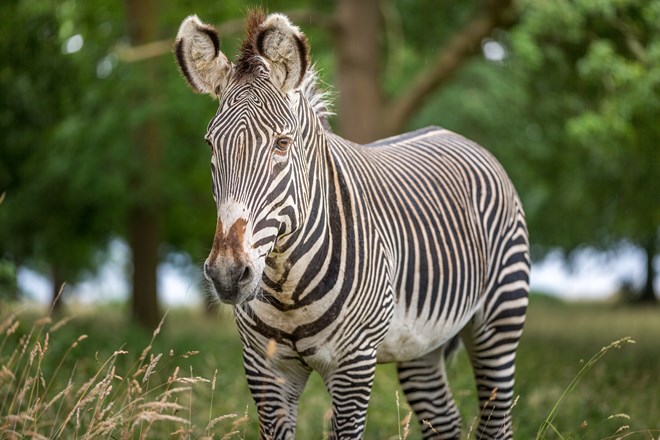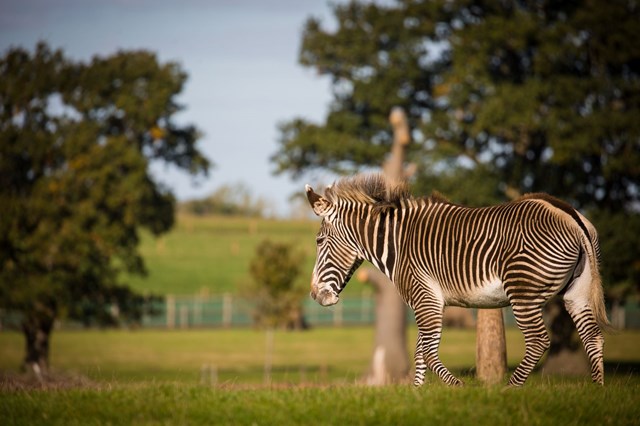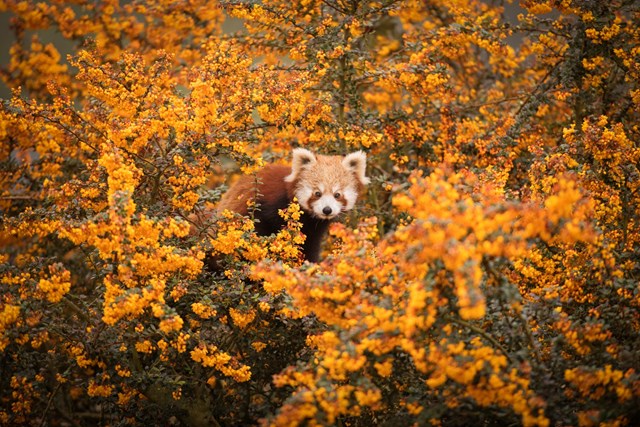
Overview
Woburn Safari Park is home to a herd of Grevy’s zebra which can be seen in the large Savannah Grasslands Reserve as you enter the Road Safari. They are able to roam in their large exhibit which they share with a number of other African species including Southern white rhino, sable antelope, Ankole cattle and Congo buffalo.

All about us
| Distribution: | Horn of Africa, specifically in Ethiopia and Kenya. |
|---|---|
| Habitat: | Sub-desert and arid grasslands. |
| Height: | Almost 5.5ft at the shoulder |
| Weight: | 350 to 450 kg |
| Gestation Period: | 8-9 months |
| Lifespan: | 25 Years |
| Threats: | In the 1970s they were poached for their hide which resulted in a decline of the species. Habitat loss also presents a major threat. |
About us
Scientific name: Equus grevyi
Grevy's zebra are unusual as they do not form long lasting bonds like the other subspecies of zebra. Their group composition may change on an hourly basis and the only lasting association is between a mother and her foal. Usually temporary groups consisting of between six to twenty individuals are formed and may be either single sex or mixed. About 10% of adult males are territorial maintaining a territory of their own and living a solitary life. These territories are to establish breeding privileges only and the dominant male will constantly patrol his range marking his boundaries with dung heaps and urine. Territorial males also bray loudly to assert their dominance. Other males are allowed access onto this territory but not to the females who reside on it. The most common causes of fights between males are if a female is on the border of two adjacent territories or if another male is trying to overtake a territory.

Grevy's zebra facts
Grevy’s zebra are the largest subspecies of zebra and are tall and stocky with thick necks. They have large heads with a muzzle that can be either grey or tan in colour surround by white. Their ears are extremely large with rounded tips and wide stripes on the back. Their manes are erect on the nape of their neck and it is striped continuously with the body. They have a sleek coat which is covered in narrow black and white vertical stripes until just above the hind legs where a chevron pattern is created within the stripe pattern. The stripes on their legs are then horizontal all the way down to their hooves. They also have a wide black stripe that runs along their backbone and a tail with a tuft of black and white hairs.
It is believed that the stripes of a zebra are a form of protection from predators. When a herd of zebra group together the stripes act as a camouflage and can confuse the predators as they can’t single out an individual. It is also believed that the individual stripe pattern for each zebra allows them to identify one another.
They are predominantly grazers although browse such as the leaves and stems of bushes can comprise up to 30% of their diet during times of drought or in areas which have been overgrazed. They will spend the majority of their day grazing using their front teeth to rip the tips of the grass and their back teeth to crush and grind the food.
Breeding occurs throughout the year and females in oestrus that are in the territory of a male are mated with and after a gestation period of 13 months a single foal is born. They are able to walk 20 minutes after birth and able to run after just one hour of being born. This is vital as the mother will not leave the foal behind so it has to keep up while its mother moves to graze and drink. Mothers will often separate a short distance from other zebra to allow their foals to imprint on them. In order to survive the foal must be able to identify their mother so they can stay close to feed and be protected. Foals are independent at 7 months of age however they will generally remain with its mother for 2 to 3 years.
In the 1970s Grevy’s zebra were heavily poached for their striking hide. There was a great demand for the narrow-striped skin of the Grevy's zebra for the manufacture of handbags, purses, slippers, rugs and even clothing. This resulted in the sharp and sudden decline of the species. Although they are still poached for their hide and for their fat which is used for medicinal purposes, this has since declined due to effective protection measures put in place. Habitat loss presents a major threat to the long-term survival of the Grevy’s zebra as grasslands and water sources have significantly declined due to grazing by livestock. They are also vulnerable to the risk of disease such as anthrax and suffer predation from lions and hyenas.

